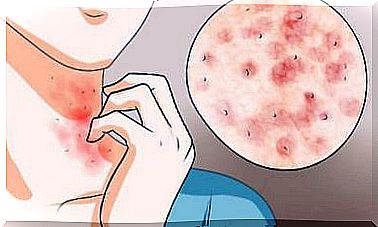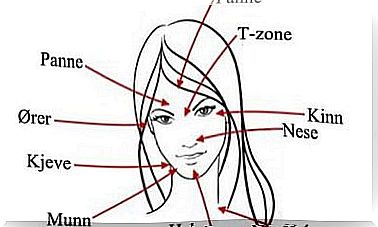Plagiocephaly: Prevention And Treatment

Plagiocephaly is the most common craniofacial anomaly. It consists of an asymmetrical distortion of the baby’s head. With this condition, the skull looks flat in the posterior (occipital) area and has a diamond shape.
This disorder is purely aesthetic and does not affect the child’s intellectual development. It has a high incidence and is mainly due to the position the baby sleeps in. For example, it can happen if the baby always sleeps on his back or with his head always leaning to the same side.
However, the condition may also be present at birth. In such cases, it may be due to a narrowing of the mother’s pelvis or even a complication during childbirth.
In today’s article we will explain how you can prevent and treat it.
Why does plagiocephaly occur?
Plagiocephaly is caused by a pressure exerted on the baby’s head. It can occur during fetal development as well as during or after birth.
The incidence of plagiocephaly increased markedly now that pediatricians advise placing the baby on its back when they sleep. This position is to prevent sudden infant death while sleeping. However, it also exerts a continuous pressure on the same area of the skull, which will end up deforming it. In the same way, carrier tits are also associated with this increase in incidence.

Other situations that can lead to plagiocephaly are:
- Premature birth
- Congenital muscular torticollis. This causes the baby to always rest on the same area of the skull
- An inappropriate position inside the uterus
- Trauma during childbirth
Symptoms of plagiocephaly
As we mentioned earlier, this is a purely aesthetic condition and does not affect the child’s intellectual development. At worst, it leads to facial and cranial asymmetry, so it can be quite visible. It can also change the alignment of the ears and cause a lump in the forehead.
How can I prevent it?
Since babies should sleep on their backs, it is important to move them so that the head position changes. Alternatively, you can alternate between supporting their head on the left and right side when sleeping.
Doctors also recommend that the child spend some time on his stomach while awake. “Stomach time” is a method of developing the baby’s motor skills. You just have to do it while your baby is awake. The method consists of placing the baby on its stomach.
Parents can either lay the baby on the chest, in the bed or other comfortable surface. You should preferably spend some time playing with them in this position. However, you need to keep an eye on them at all times. The baby’s muscle ability is also strengthened through these activities.
You should mainly avoid supporting your head in a position for extended periods. To do this, you can hold the baby in your arms or place them in chairs that do not put pressure on the skull. Therefore, do not use seats that hold the baby in the same position for too long, such as car seats. If you need to use them, take breaks and help them change position.
You can also take some other interactive steps. For example, you can place toys on the other side of their crib. That way, the baby will have to turn his head. Another option is to lift the mattress slightly so that it is not completely flat.
Treatment of plagiocephaly

This treatment is only for cases where the previous measures did not work.
First and foremost, you can use shaping helmets as these exert moderate pressure on the skull. They also prevent the head from leaning on the already deformed side. The helmets are a dynamic orthotic cranioplasty system and the baby can wear them from his third month. You need to check them often.
Doctors only resort to surgery in severe cases. In fact, they only resort to it as a last resort after everything else fails.
Conclusion
You need to follow certain preventative measures to prevent this deformity from happening to your baby. These are some simple exercises and measures that will prevent your baby from developing a significant disfiguring problem.
In the same way, you should consult a doctor if you have questions or perceive any discrepancies. They will definitely give you advice on what you can do to help your baby.









